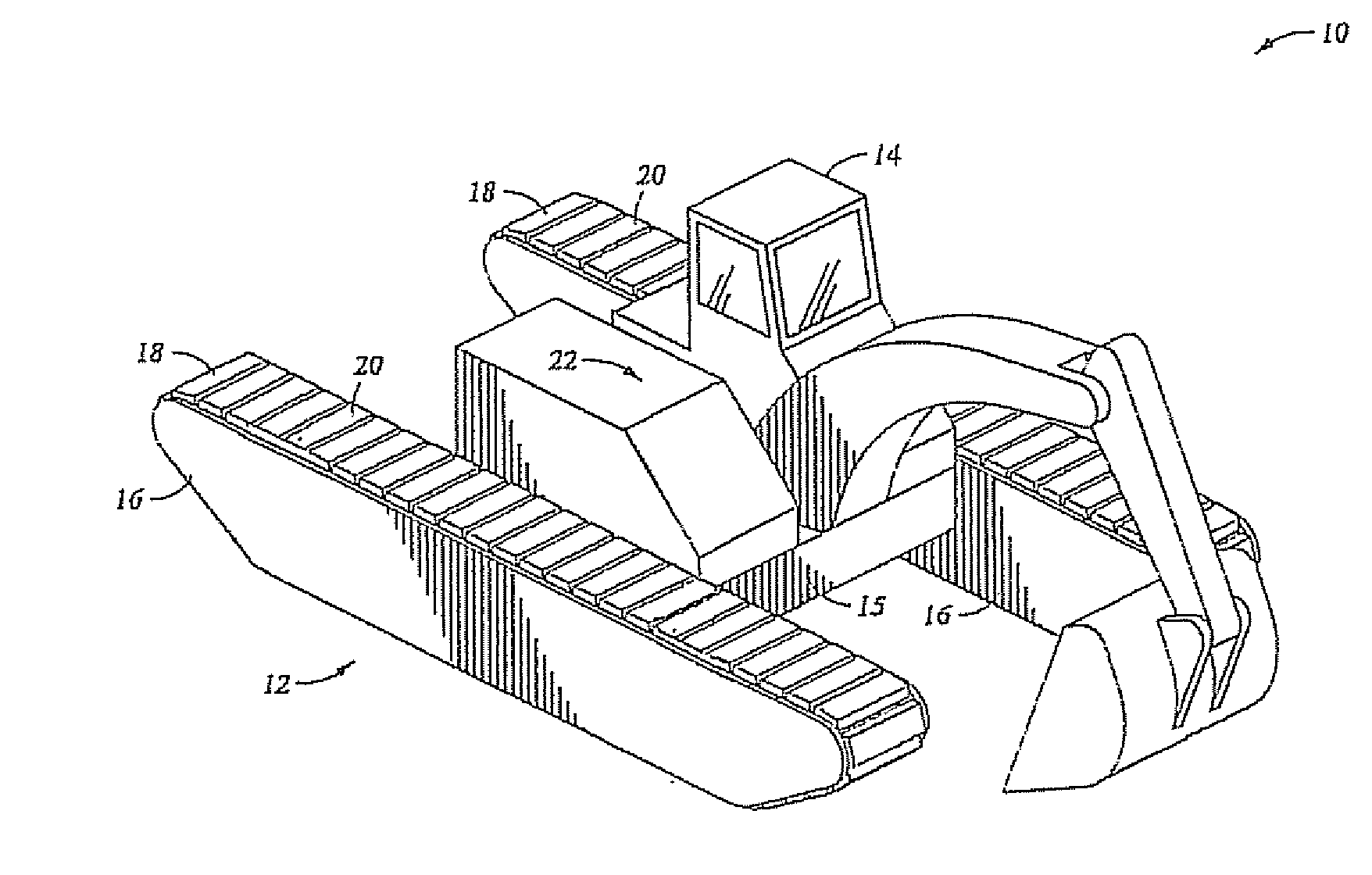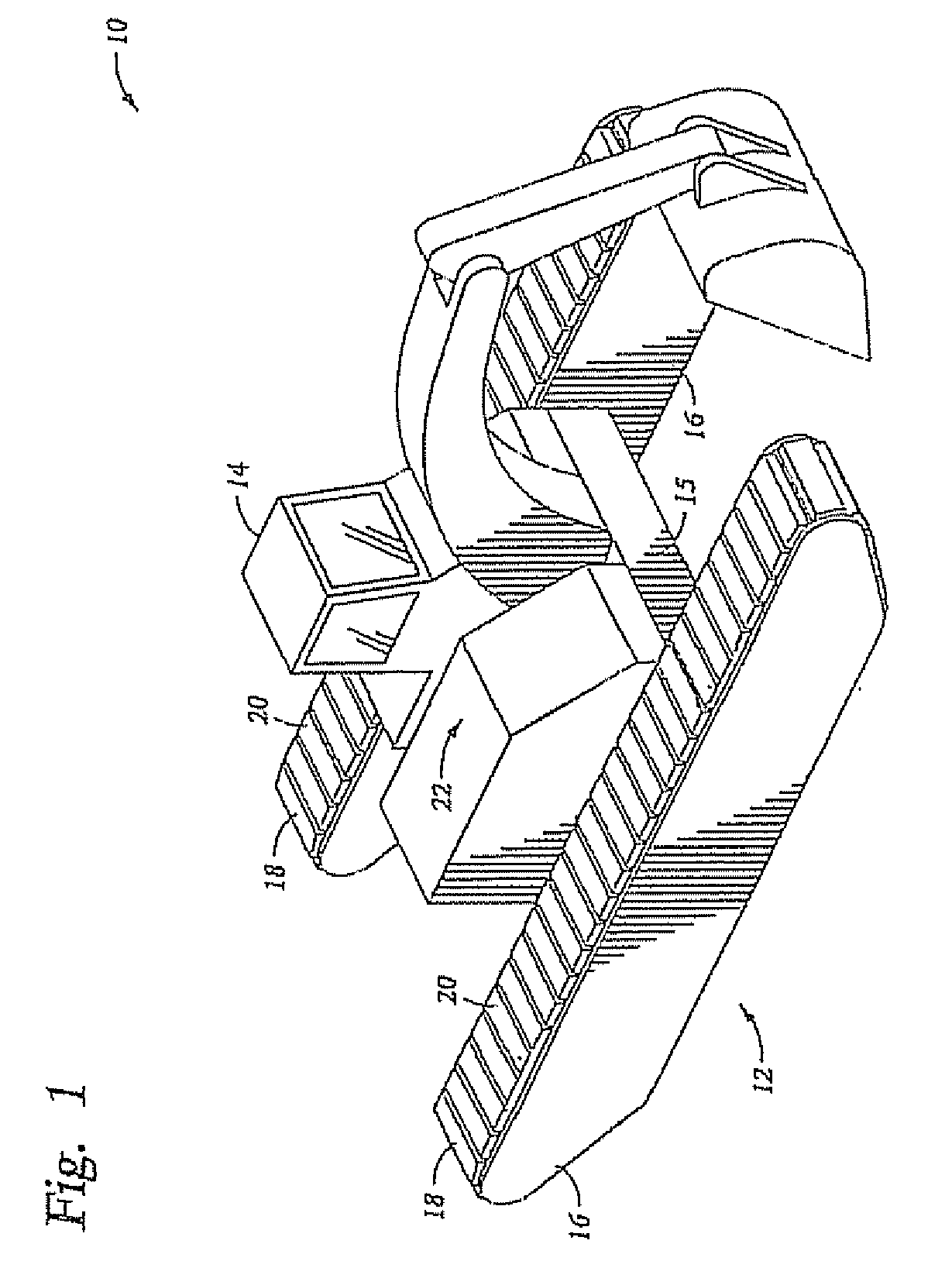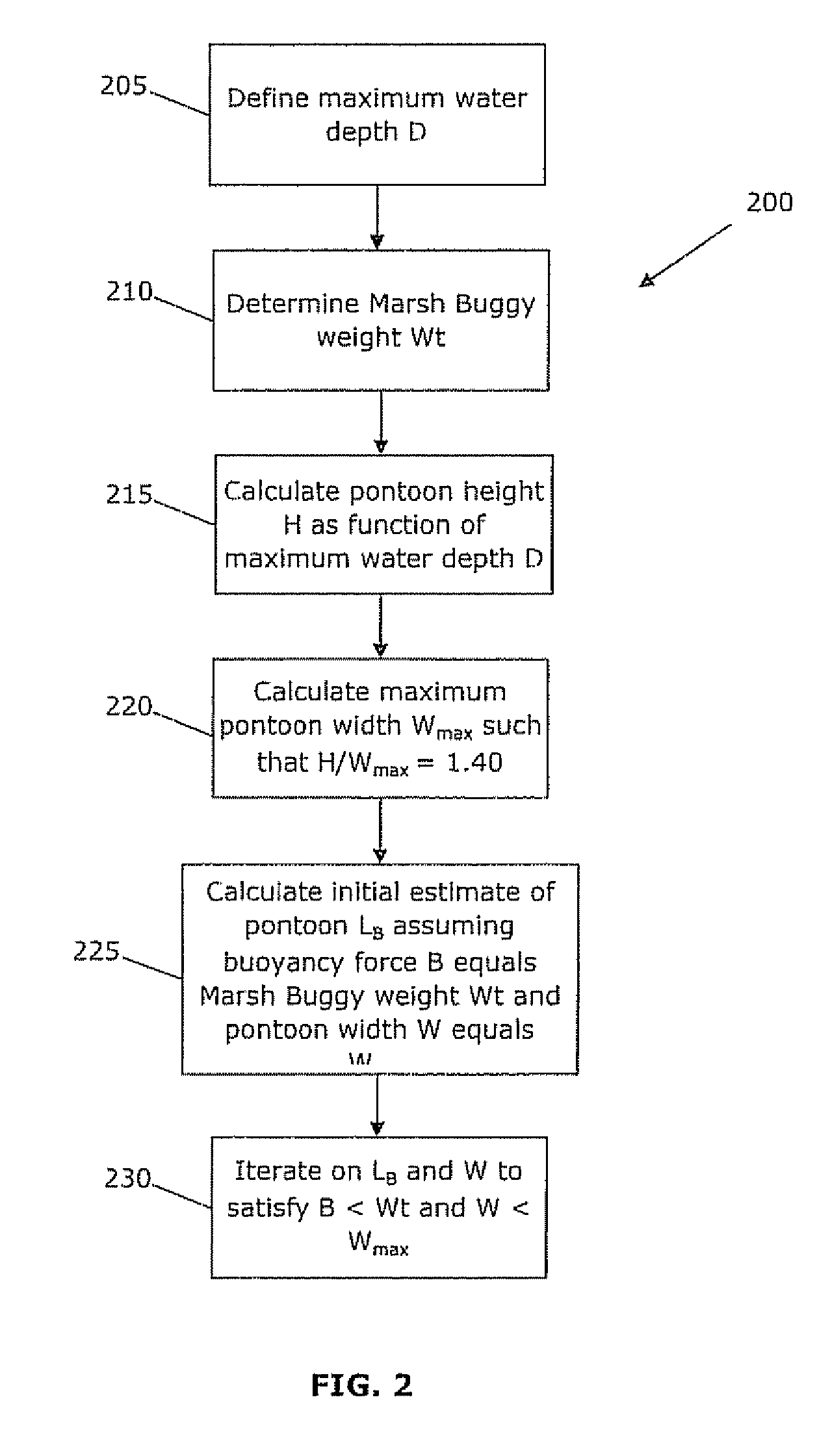Deep water amphibious vehicle
a technology for amphibious vehicles and deep water, applied in the field of amphibious vehicles, can solve the problems of limited earth-moving operations of marsh buggies, vehicles aren't designed to operate while floating, and many conventional marsh buggies are typically limited to operations
- Summary
- Abstract
- Description
- Claims
- Application Information
AI Technical Summary
Benefits of technology
Problems solved by technology
Method used
Image
Examples
Embodiment Construction
[0010]The present invention solves these and other needs in the art by providing an amphibious vehicle that is capable of supporting operations on land and in deep water having a depth over four feet. The vehicle includes a chassis having a weight, at least two pontoons supported by the chassis for supporting the chassis weight, and a track system disposed on each of the pontoons and adapted to propel the vehicle. Each pontoon preferably has a height of at least four, and more preferably of at least seven feet, a width and a length adjacent to the land, wherein a ratio of the height to the width exceeds 1.4, and a volume configured to provide buoyancy and support the chassis weight.
[0011]Some method embodiments for the design of a pontoon for an amphibious vehicle operable in a marsh with deep water and a density include determining a total weight of the vehicle and equipment positioned thereon, determining the maximum water depth in the marsh, selecting a height of the pontoon as a...
PUM
 Login to View More
Login to View More Abstract
Description
Claims
Application Information
 Login to View More
Login to View More - R&D
- Intellectual Property
- Life Sciences
- Materials
- Tech Scout
- Unparalleled Data Quality
- Higher Quality Content
- 60% Fewer Hallucinations
Browse by: Latest US Patents, China's latest patents, Technical Efficacy Thesaurus, Application Domain, Technology Topic, Popular Technical Reports.
© 2025 PatSnap. All rights reserved.Legal|Privacy policy|Modern Slavery Act Transparency Statement|Sitemap|About US| Contact US: help@patsnap.com



